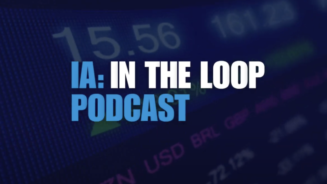Company over country
When making decisions about stocks, Dobbs says his top priority is individual companies rather than countries, although his team of analysts produce country judgments that may be reflected within the portfolio.
Despite this, he adds that if a country has a good valuation but he cannot find stocks that seem likely to generate returns, then he is faced with a “useless bit of data”.
Although Dobbs’ decisions are informed by regular contact with a team of analysts who produce a long stream of data about the long term prospects of companies, he often brings his own experience to the table to reach a fair target valuation.
“I do not just sit there saying ‘there is a good upside here, I will buy that’,” he says. “Hopefully, having 30 years’ experience picking Asian stocks gives me a bit of a chance to push back on analysts. There are times when I don’t disagree with their fundamental view but think they are being too conservative about where a stock could trade if they are right.
“The decision to buy and sell rests with me. I won’t hide behind an analyst. They have to give me conviction.”
His investments are primarily driven by “old-fashioned external Asian” stocks, using Asia’s strength as an exporter across a variety of industries, namely the IT sector and consumer product companies manufacturing for external markets.
This focus becomes clear when one looks at the Schroder AsiaPacific Fund’s top 10 holdings, which include Taiwan Semiconductor Manufacturing (5.9% of net asset value (NAV)), Hyundai (3.7%) and Samsung Electronics (3.5%).
Defensive stocks
According to Dobbs, such companies have benefited from their extensive experience in uneasy market environments.
“The export area is not very fashionable, and people have heard a lot about rising costs and still have concerns following the global financial crisis,” he says.
“What we see as interesting, however, is that a lot of these companies are used to operating in difficult environments. They understand cash flow and shareholders, and some have been in the same business for many decades.”
To demonstrate, Dobbs uses the example of Taiwan Semiconductor Manufacturing, which is also the top holding (6.59%) of his Asian Alpha Plus Acc Fund.
Like many IT companies in Taiwan, the company produces behind-the-scenes technology for the main IT brands, in particular chips for smartphones.
The company operates as a foundry, manufacturing chips designed by other IT companies, which are then used in smartphones sold throughout the world.
“A lot of its silicone chips are being sold to China and India, allowing it to benefit massively from the rapidly developing smartphone market in both countries,” he says.
“These countries are skipping a line of development and moving straight into smartphones.
“No one has a fixed-line telephone, for example. It wouldn’t make sense when they can move straight into mobile telecommunications, especially given the continuing introduction of 3G and 4G, which is providing people with more access to the internet.”
Beyond such ‘hard IT’ companies in Asia, Dobbs says a particular Asian exporting opportunity can be found in supply chain assurance, in which Western importers are becoming increasingly concerned with how their foods and goods are sourced.
This benefits Asian investors who can charge more for products they guarantee have been produced in an environment conducive to product quality and quality of life for workers.
“This assurance is a long-term thing and it will benefit the bigger players,” he says. “It is about upscaling products to meet market demands, which benefits the company on both profit and quality margins.”
He adds that the jump in IT access across many of Asia’s biggest countries has also led to a boost in e-commerce, because locals prefer to shop from their desks in the absence of the physical retail culture prevalent in Western society.
As an example of Dobbs’ country-to-country weighting, the Schroder AsiaPacific Fund is most heavily invested in Hong Kong, where it holds 23% of its net asset value.
Dobbs says Hong Kong is being bolstered by a booming retail sector and an increased flow of money from Shanghai as a result of the Hong Kong-Shanghai Stock Connect, a cross-boundary investment channel that connects the Shanghai and the Hong Kong stock exchanges.
Indian exposure
The fund is also heavily invested in India, at 15.9%.
Dobbs says opportunities can be found during periods of uncertainty, something India has had in spades over the past few years.
“I have been buying more there in the past three years because we have seen attractive companies and the longer term cycle has looked more attractive,” he says.
“Everyone knew its politics were difficult, its telecoms were in chaos and it had a coal problem, but there was a lot of excess capacity; and if you can get some operational power behind you, you can make money.”




